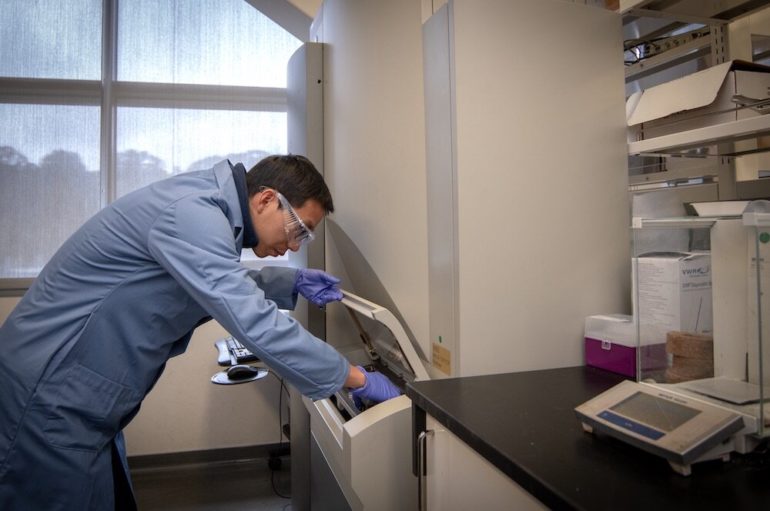One of the aspects of lithium-ion batteries least understood by scientists has now been elucidated by a new research approach, opening the door to major improvements in battery performance, according to a new study by Berkeley Lab scientists.
Their study, recently published in the journal Joule, used a technique developed by Berkeley Lab battery scientists in the Energy Technologies Area to illustrate the structures of large organic molecules generated during battery operation. These molecules are known to reside in a part of the battery called the solid-electrolyte interphase (SEI) layer, which is poorly understood but has a critical impact on battery performance.
“The findings reveal a new dimension of chemical composition inside lithium-ion batteries and enables a new direction for rational engineering of the battery’s electrolyte system,” said lead author Chen Fang, a postdoctoral researcher in Berkeley Lab’s Energy Technologies Area.
The researchers used a unique technique of “on-electrode chromatography” coupled with matrix-assisted laser desorption/ionization (MALDI) diagnostic capability at Berkeley Lab’s Molecular Foundry to separate and illustrate the structures of large organic molecules generated during battery operation. On-electrode chromatography allows the separation of organic molecules on the surface of the electrode. MALDI is typically used to characterize biomolecules such as proteins and peptides.
This coupled approach, used successfully for the first time in battery research, is highly adoptable as it uses commercially available instrumentation. It will allow scientists to precisely, quickly, and conveniently identify the molecules in the battery, including their structures and weight distributions.
Designing a better electrolyte system will enable next-generation batteries, said battery scientist Gao Liu, the study’s corresponding author. “The current electrolyte system works very well at ambient temperatures and with existing battery chemistries,” he said. “However, the current electrolytes do not work well with the high energy density batteries, high-voltage batteries, or batteries working in extreme cold and with extreme fast charging.”
Creating 3-D virtual replicas of all-solid-state batteries
More information:
Chen Fang et al. Large-Molecule Decomposition Products of Electrolytes and Additives Revealed by On-Electrode Chromatography and MALDI, Joule (2021). DOI: 10.1016/j.joule.2020.12.012
Provided by
Lawrence Berkeley National Laboratory
Citation:
New research technique sheds light on least understood part of lithium batteries (2021, January 15)
retrieved 15 January 2021
from https://techxplore.com/news/2021-01-technique-understood-lithium-batteries.html
This document is subject to copyright. Apart from any fair dealing for the purpose of private study or research, no
part may be reproduced without the written permission. The content is provided for information purposes only.



